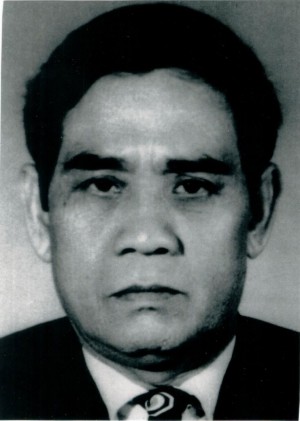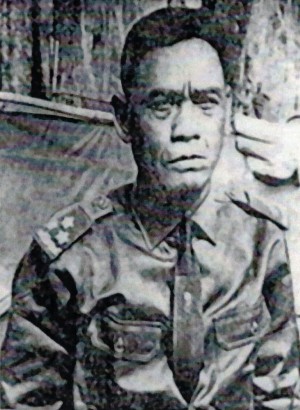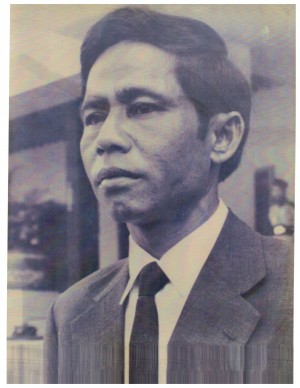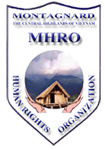Summary of Montagnard History
By Rong Nay
(* For further information, please refer to SONS OF THE MOUNTAINS and FREE IN THE FOREST by Gerald Cannon Hickey ( Yale University Press), WE HAVE EATEN THE FOREST by Georges Condominas (Kodansha International Press) and SHATTERED WORLD by Gerald Cannon Hickey (University of Pennsylvania Press)
The indigenous peoples of Vietnam’s Central Highlands are often referred to as “Montagnard” or Mountain People. Other tribal names include, “Anak Cu Chiang” or “Dega” referring to the “Original People” of the Central Highlands. Our ancient peoples inhabited the coast of Vietnam and later migrated to the Central Highlands region where we lived for centuries. Our tribes speak Mon Khmer and Austronesian (Malayo-Polynesian) languages. The ancient Malay Polynesian groups migrated from Polynesia and Indonesia, with the Mon Khmer speaking tribes migrating from Burma (Myanmar.)
The Malayo-Polynesian languages are spoken by the Rhade, Jarai, Chru, Rai (Seyu), Roglai, and Hroy. Mon Khmer languages include those spoken by the Bahnar, Rengao, Sedand, Halang, Jeh, Monom, Koho, and Chrau, Katu, Phuang, Bru and Pacoh.
Prior to 1800, the Central Highlands tribal peoples lived isolated in a highlands existence under a feudal system of government living peacefully with our customs, culture and traditions in a village-centered society. We were separated from lowland cultures. Our spiritual life was rooted in our relationship with the land; the rivers, lakes, and forests. The life of the Montagnard “Anak Cu Chiang” peoples revolved around nature; the seasons, family, and village. Our weapons were crossbows and spears for hunting. For our transportation, we used horses and elephants.
There are over 28 tribal groups with the five major tribes being: Bahnar, Jarai, Rhade, Koho and Mnong. The early peoples believed in nature spirits and the divine, “Ae Die” (Grandfather Sky / God) was present in all creation.
In the last 200 years, the outsiders- the French, Vietnamese, Americans and present day Vientamese government, used our ancestral land. Our land became a battlefield for over thirty years. During the French-Indochina and Vietnam wars (1945-1975), the Montagnard Indigenous Peoples were used as a tool of the war and our people became victims of the conflict on our ancestor’s land. As a result, more than a million Montagnards were killed and eighty-five percent of our villages were destroyed or abandoned. The Montagnards fought and died for France’s interests in Vietnam, for America, and especially for the dream of freedom which today, benefits all Vietnamese people in Vietnam.
1848– The first French Catholic missionaries explored the remote areas of the Central Highlands in Indochina and established a post in Kontum. The French organized the diverse tribes into a cohesive political unit and gave them the name, “Montagnard Du Sud Indochinois” or Montagnard of South-Indochina. During the colonization period the French Federal Government recognized the territorial sovereignty and integrity of the Montagnard people. There were no ethnic Vietnamese (Kinh people) and others living in the Central Highlands during that time.
In 1892, the French transcribed our dialect into Roman alphabet and constructed the first elementary school in 1901 at Buon Ama Thuot.
1945-1954, the French Indochina War between the French and the North Vietnamese Communists took place. The French Federal government recruited thousands of Montagnard teenagers and including 13 battalions of Montagnards who were armed and recruited to join the French Forces in their fight against the North Vietnamese Communists, Viet-Minh.
May 27, 1946, Admiral D’Argenlieu, a representative of the French Federal Government in Indochina, created an autonomous country for the Montagnard population of South Indochina called “Pays Montagnards Du Sud Indochinois (PMSI). This Ordinance gave the Montagnard people a Statute Particular granting self-administration and self-determination to the Montagnard people of the Central Highlands.
July 25, 1950– The French classified the Montagnard territory as a “Domain de la Couronne” (Crown Domain) directly under the control of Emperor Bao Dai. The 13 battalions of Montagnard troops continued to serve the French Federal Government and to protect the Crown Domain for the Vietnamese Emperor.
May 21, 1951, Decree No. 16/QT/TD was issued. Article 1 said that the non-Vietnamese populations who lived on territories called the “Montagnard Regions of the South” and the Central Highlands administration was separate from the lowlands.
July 1953, Montagnard autonomy was suppressed by the regime of Emperor Bao Dai. The Pays Motnagnard Du Sud Indochinois (PMSI) was changed to Pay Montagnard Du Sud) PMS, Country of the Montagnards of the South.
July 21, 1954– The Geneva Convention announced the end of the Indochina War. At the Convention, there were delegations from France, Britain, the U.S., Soviet Union, the Republic of China, Cambodia, Laos, South Vietnam and North Vietnam. Only the French and the Vietnamese representatives signed the agreement on the cessation of hostilities in Vietnam. The French did not allow representatives of the Montagnard people to participate in the Convention and consequently the Montagnard voice and interests for their homeland and territory was not represented.
Vietnam was divided into two countries. Ho Chi Minh assumed leadership in North Vietnam and King Bao Dai of South Vietnam, divided by the 17th parallel. Later Ngo Dinh Diem, with support by United States became the first President of the Republic of South Vietnam. The French agreed to withdraw from Vietnam. The order was given to strike down both the French and Montagnard flags and the South Vietnam flag was raised. Thousands of Montagnads were stunned by this betrayal when the French transferred all Montagnard land and governance to South Vietnam.
Under Ngo Ding Diem’s Regime of South Vietnam (1955-1963)
Montagnard autonomy, granted by the French government, was completely eliminated and annexed the Central Highlands territory which became part of the national territory of the Republic of Vietnam and under the Administration of the South Vietnamese government in Saigon. In the seven provinces of the Central Highlands, Diem replaced Montagnard Province Chiefs with Vietnamese for better control. The Montagnard indigenous peoples were now classified as an “ethnic minority” on their own ancestral lands and the goal of the new government was assimilation. The 13 Montagnard battalions that had been part of the French army were reorganized and integrated into the South Vietnamese army and forced to take Vietnamese names. All Montagnard officers lost their commands and were replaced by Vietnamese.
Diem completely disarmed the Montagnards, confiscating traditional swords, spears and crossbows used for hunting giving them to the Vietnamese who were recently resettled on Montagnard lands in the Central Highlands. This left the Montagnard people totally exposed and vulnerable to attack by tiger and other jungle animals.
Diem resettled one million North Vietnamese refugees on the most fertile Montagnard lands in the Central Highlands and thousands of Montagnard people were forcibly relocated on less fertile lands where farming was difficult causing greater hardship and suffering. Many Montagnard leaders who opposed Diem were jailed or killed. In some cases they were falsely charged with being pro-Communist.
Diem prohibited teaching Montagnard languages and burned all documents and books in the Montagnard dialect. He abolished tribal courts, land and property rights and he refused to recognize the Montagnards as the rightful owners of the Central Highlands.
Diem’s campaign of assimilation included inhumane policies compelling Montagnard military men and civil servants to take Vietnamese names and to also change Montagnard names of villages, provinces, rivers and mountains to Vietnamese names.
In 1955, at the same time Ho Chi Minh promised autonomy for the Montagnards in the Central Highlands after victory with South Vietnam. Communist forces recruited thousands of Montagnard men, women and children in remote villages to serve as laborers and to work on construction on the HCM Trail. North Vietnam also kidnapped many young Montagnard children and took them to North Vietnam to be subjected to Communist doctrine training, propaganda and to use these young people as agents and fighters in the Central Highlands and to kill their own people.
1956-The War between North and South Vietnam began. The Montagnard people were used by both governments as tools during the Vietnam War. At the same time thousands of Montagnards were displaced and resettled along the roads under the Land Development Program of President Diem and his American advisor, Wolf Ladejinksy. As a result of this destructive program, thousands of Montagnards died through starvation, disease and neglect.
For this reason, on October 26, 1956, which was the National Independence Day of the South Vietnamese government, the Montagnard Indigenous Peoples presented President Ngo Dinh Diem a white elephant, which according to Montagnard tradition, meant congratulations and blessings. Honoring him in this manner was very important according to Montagnard custom, signifying a truly special gift, occurring rarely in the history of the Montagnard people.
The gift of a white and beautiful elephant is sacred, precious, and signifies great honor and importance. It represented how the Montagnard people offered their trust and their deepest respect to President Diem. The Montagnards prayed that he would not destroy them. This trust would soon be betrayed and destroyed by the Diem policies towards the Montagnards. The Vietnamese word “Moi” (savage) had spread everywhere in the language Vietnamese people used to describe the Montagnard people. The term implied that the Montagnard indigenous peoples originated as monkeys with tails, and the word showed the deep contempt towards the tribal peoples. The discrimination went deeper and deeper as the Diem government implemented policies of discrimination and racism. President Diem and his administration completely ignored the daily suffering which happened to over a million Montagnard people living in the Central Highlands.

Bham Enuol 1958
1958, the BAJARAKA Movement was formed against President Diem’s Policies.
Several Montagnard leaders representing all the major tribal groups of the Central Highlands and led by Y Bham Enuol, formed the BAJARAKA Movement to resist assimilation policies and to regain the right of self-determination and autonomy which had been granted by the French. This name was a combination of the letters for the main tribes of the Montagnard people: the Bahnar, Jarai, Rhade and Koho. BAJARAKA’s goal was to create a separate nation with Montagnard self-governance, yet living peacefully with the Vietnamese people. President Diem immediately crushed the BAJARAKA Movement by force. As a result, six Montagnard leaders: Y Bham Enuol, Paul Nur, Siu Sip Y THih Eban, Y Ju Eban, Nay Luett and Touneh Yoh were sentenced to six years of imprisonment.
1960- Ho Chi Minh created a movement called, “Front for the West Liberation of the Central Highlands” and appointed a puppet chairman, Y Bih Aleo. Thousands of young Montagnards were conscripted who lived in remote areas to fight and die for the benefit of the North Vietnamese Communists. Ho Chi Minh continued to falsely promise to restore autonomy to the Montagnards after victory over South Vietnam.
1961-1972, The United States backed South Vietnam in the Vietnam War. The American Special Forces recruited and trained over 40,000 Montagnard troops who fought and died alongside the American soldiers with courage, loyalty and enduring friendship. The Montagnard leaders were told, and most believed, that the U.S. government would help the Montagnard people regain their autonomous state with the rights for self-determination and self-governance. Finally, the Montagnard people were exploited and exterminated by both governments of North and South Vietnam.
Under General Nguyen Van Thieu’s Regime (1964-1975)

Bham Enuol 1964
February 12, 1964 The Montagnard leader, Y Bham Enuol and six other BAJARAKA leaders were released. The Saigon government immediately appointed Paul Nur as Assistant province Chief of Kontum and Y- Bham Enuol as Assistant Province Chief of Daklak Province to conciliate Montagnard aspirations and to prevent another potential uprising. However, the military government of Saigon continued to oppress the Montagnard people, just as the Diem regime had done.
Y Bham Enuol and other Montagnard leaders again organized a new underground front called, “Front de Liberation des Hauts-Plateaux Montagnard” (FLHPM), the Montagnard Highlands Liberation Front. Y Bham Enuol was approached by Khmer Krom and Champa people in Cambodia who asked him to join a new front which was formed called, FULRO, “Front Unifie De Lutte De La Races Opprimee and was organized August 1, 1964 by Les Kosem (Cham Cambodia) and Um Sawud (Kampuchea Krom) both with the Cambodia Army.
The purpose of this united front was to combine forces to defeat common enemies. As a result of different political visions and aspirations, the Montagnard leader Y Bham Enuol was not ready to form the alliance at the time. In the mean time, Y Dhon Adrong, a member of BAJARAKA and who was a Montagnard teacher at the primary school at Quang-Duc Province, made a secret contact with Les Kosem and Um Sawud and agreed that Bajaraka join the FULRO front. This action was without Y Bham Enuol’s approval or decision.
September 19, 1964, after meeting with Les Kosem and Um Sawud in Phnom-Penh, Cambodia, Y Dhon Adrong returned to Vietnam and met Y Tlur Eban who was a military interpreter at the Buon Sapa and Mega Special Forces Camps in the Central Highlands of Vietnam. He ordered Y Tlur Eban as the commander, to use force in a symbolic effort to wake up the government of Vietnam and the Americans to pay attention to the suffering and urgent issues which the Montagnard demanded.
September 20, 1964, the FULRO rose up and a rebellion took place in U.S. Special Forces camps in Buon Sapa, Mega and Quang Duc Provinces, under Y Tlur Eban who was the acting Montagnard commander. As a result, the FULRO occupied Buon Ama Thuot radio station. After the uprising, Y Tlur Eban transported Y Bham Enuol and family to the FULRO Headquarters Camp Roland inside Cambodia, near Mondulkiri for safety and a meeting with Les Kosem and Y Dhong Adrong.
Y Bham Enuol was very frustrated with the violence and the decision for the uprising and the continuing conflict. As the months of conflict continued in the Central Highlands of Vietnam, finally Y Bham Enuol accepted to be a chairman of FULRO. In 1965, fighting again broke out in Buon Brieng, Cheo Reo and Dak Nong provinces. As a result, the Saigon government sentenced four Montagnard FULRO members to death.
May 4, 1967, Y Bham Enuol, as the leader of the Montagnard Independence Movement, formally proposed that the Saigon government accept the following 8 points of the Montagnard people’s aspirations according to the 1958 Montagnard BAJARAKA vision for self-determination and an independent sovereign nation for the Montagnard Anak Cu Chiang peoples in the Central Highlands:
- 1. To accord a special statute and a special Constitution for the Montagnard people
- 2. To set up a special commission for Montagnard affairs at Buon Ama Thuot, the capital of the Montagnard Republic, Plateaus Montagnard Du Sud (PMS)
- 3. To permit recruitment and organization of the Montagnard Armed Forces
- 4. To return to the Central Highlands all Montagnard civil servants and military men on duty outside Montagnard territory
- 5. To permit the Montagnard people to receive aid directly form the U.S. or from other nations
- 6. To raise the Montagnard flag to the same height as the Vietnamese flag
- 7. To clearly mark the borders of the Central Highlands so that the Montagnard people could regain their autonomy
- 8. To agree to the participation of the Montagnard people in another Geneva Conference or in other international conferences to resolve issues
The Saigon government was reluctant and continued its inhumane policies towards the Montagnard people. Montagnard troops continued to fight with the South against North Vietnamese Communists and Montagnard people continued to suffer.
January 26, 1968 Viet Cong forces overran Ban Me Thuot, Pleiku, Kontum and Dalat. The Vietnamese Communists used Montagnard villages as shields to cover their assault on the towns and thousands of Montagnard people were killed. In Hue City, Communist troops invaded and executed 82 Montagnard students who were living in a boarding school of the Ministry of Ethnic Minority Development.
August 15, 1968 Y Bham Enuol decided to withdraw completely from the FULRO movement and made the announcement that the earlier Montagnard independence movement, FLHPM, the Front de Liberation des Hauts-Plateaux Montagnard, would continue its goal to regain Montagnard Central Highlands sovereignty and integrity. This decision was made known clearly to the Saigon government on that same date.
September 16, 1968 President Nguyen Van Thieu consented to meet with Y Bham Enuol in Saigon to discuss Y Bham Enuol’s eight-point proposal. No concrete decision was made at the end of the meeting. The conflict in the Central Highlands was increasingly violent and the Vietnamese Communist forces mounted intensive night assaults on Montagnard villages, killing men, women, children and the elderly huddled in bunkers.
March 30, 1972 North Vietnam continued its sweeping offensive and attacked many Montagnard villages in the Central Highlands. As a result of the fighting, the wounded, homeless, malnourished and displaced Montagnard people died by the thousands.
October 20, 1973, Y Bham Enuol, living in exile in Cambodia, decided to nominate Kpa Koi as the vice-president of the Montagnard Independence Movement, FLHPM, and continued to struggle and demand that the Vietnamese government satisfy the eight point proposal for Montagnard self-governance and autonomy.
In 1973, the U.S. Armed Forces withdrew from Vietnam following a cease-fire agreement with the North Vietnamese. All Montagnard Special Forces units were transformed into Vietnamese units and under Vietnamese commanders.
March 3-10 1975, the North Vietnamese forces overran Ban Me Thuot ( Buon Ama Thuot) Pleiku, Kontum, Dak Nong and Dalat and March 11, 1975, the South Vietnamese Government’s Air Force bombed Buon Pa Lam, killing 125 Montagnards and wounding 210. The entire village was burned to the ground and Montagnard villagers were forced to flee from their homes suffering terribly with no clothing, blankets, food or medical help.
March 24, 1975, President Thieu informed three high level American officials that he was withdrawing his forces from the Central Highlands and requested that the U.S. Air Force consider the Central Highlands as a free bombing area.

Luett Nay
April 4, 1975 Nay Luett, the Montagnard Minister for Ethnic Minority Development, and many other Montagnard leaders, met with George Jacobsen, Assistant the to the U.S. Ambassador, Colonel Lamar Prosser, and Edward Sprague. Nay Luett asked for protection for the Montagnard leaders and people because he knew genocide would be committed upon the Montagnard people. He also proposed to organize a 50,000 member strong Montagnard Force, with support from the United States, to defend the Montagnard people in the Central Highlands, but Mr. Jacobsen and the South Vietnam government refused. (*See article “A Debt Too Far” in the Montagnard Human Rights Organization website www.mhro.org)
1975 The Khmer Rouge defeated the Lon Nol government in Cambodia. Y Bham Enuol and his family and other Montagnard leaders were killed by the Khmer Rouge after the French Embassy in Phnom Penh refused to provide sanctuary or assistance.
April 30, 1975 until Present
After the North Vietnamese Communists took over South Vietnam; the Montagnard Indigenous Peoples who survived the war continued to die under the Vietnam communist regime. Several thousand Montagnards were captured and executed by the Communist regime or died in “re-education” prisons. The Montagnard freedom, autonomy and self-government promised by Ho Chi Minh never became a reality and hundreds of Montagnard leaders who experienced and remembered Ho Chi Minh’s promise were killed. These leaders include: Y Bih Aleo, Rcom Briu, and Y Ngong Nie Kdam. The secret executions continue today.
Over 12,000 Montagnards who escaped to the jungles of Vietnam, Cambodia and Thailand continued fighting the Vietnamese Communists for 17 years from 1975-1992 with the name, “Front de Liberation des Hauts-Plateaux Montagnard (FLHPM) under the direction of Commander Y Ghok Nie Krieng and Assistant Commander, Rong Nay.
The aim was to resist the Communists and to continue fighting for Montagnard freedom and independence. Over 8,000 died in the jungle because of starvation, disease, attack by tiger, and combat wounds.
1983- Nay Luett, the Montagnard Minister of Ethnic Minority Development, suffered terribly for 9 years of imprisonment and torture following the Communist take-over. Within two months after being released from prison, he died at home in his beloved village in the Central Highlands. Doctors from Hanoi came to the home of Mr. Luett shortly after he died, removed the body and took it to a local clinic where the brain was removed stating that the Hanoi medical team wanted the brain for analysis and research.
The family was warned not to reveal this horrific act of desecration to anyone, although several family members and witnesses testified after examining the body prior to burial. Mr. Luett’s wife is one of the surviving witnesses and is still alive as of 2013. Others, Ksor Rot, the Montagnard Senator from South Vietnam was executed and Paul Nur, the Former Minister of Ethnic Minority Development were murdered in a Hanoi prison.
February 1986, the Montagnard Force (FLHPM, the Montagnard Highlands Liberation Front, often referred to as FULRO) decided to lay down arms to the Thai government and ask for political asylum in the U.S. On Nov. 24, 1986, the first group of 212 Montagnard soldiers with all the former FLHPM leaders was resettled in North Carolina, U.S. as refugees.
November 1992 The second remaining group of 417 former soldiers and their families were airlifted from a remote northeastern territory in Cambodia, to Phnom Penh, and also came to North Carolina, USA. The Montagnard Resistance Movement was over and a new, peaceful struggle would continue for Montagnard human rights, the rule of law, and Montagnard self-determination in the Central Highlands of Vietnam.
2001 to 2004, over 30,000 Montagnard people staged peaceful protests in Pleiku and Daklak provinces against the Hanoi regime. They demanded the return of their lands, the right to live and the right to freedom of religion. The Hanoi government responded by sending huge numbers of police and military forces into the Central Highlands and expelled foreigners and news media. They used tanks and helicopters to crush the Montagnard protest. Hundreds of Montagnards were killed, over 2,000 were missing, and over 500 were arrested, and jailed up to 17 years.
Today the Montagnard people have lost more than any other group in Vietnam. We have lost the right to live, the right to own our ancestral lands, our language, the right to have home churches, the right to access international scholarships for education and travel, and the right to operate traditional courts.
We are in danger of losing our entire culture. Traditional ways of life have been systematically abolished. Development assistance, education, and humanitarian aid continue to be blocked and international observers are restricted from the Central Highlands. The Central Highlands has become a kind of prison for the Montagnard people with the Communist system of internal security and secret police. The Hanoi government considers the “Anak Cu Chiang” Montagnard indigenous peoples as a long term historical enemy. A campaign of Vietnamization, assimilation and“ethnic-cleansing” has continued.
The Montagnard “Anak Cu Chiang” peoples who live overseas in the U.S., Canada, Finland, and France continue our peaceful struggle for our rights, our freedom, and our self -determination according to the principles outlined in the UN Declaration on the Rights of Indigenous Peoples.
